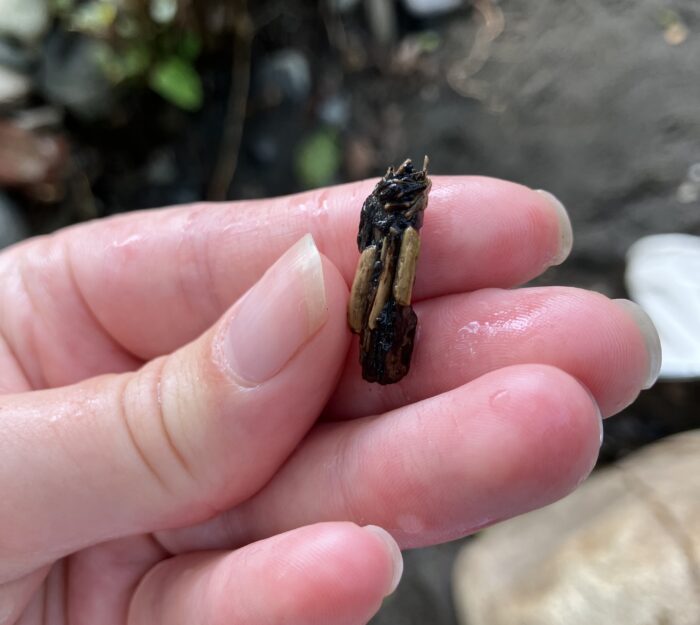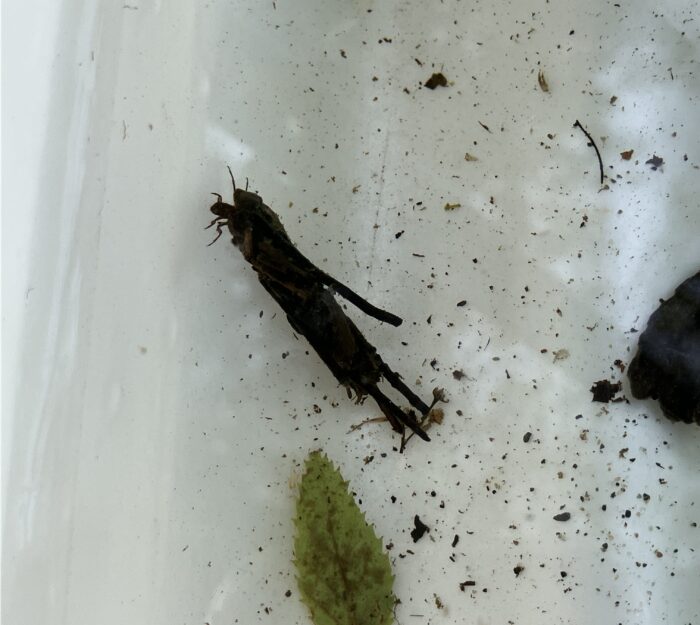
On any given day in the fall, if you dip a toe in the river, the water will likely feel chilly. For people, it’s best to avoid cold water this time of year, especially as the wind gusts speed up the ever-changing currents, and wet clothes and cold air are a recipe for hypothermia.
But for teeny-tiny microscopic critters known as ‘macroinvertebrates’ braving the cold, fast currents right below your waders, cold water is par for the course. Tiny engineers of their freshwater habitats, Caddisflies build portable houses that can withstand tough currents! How? They armor themselves with tiny pebbles, sticks, and sediments, creating a shield to camouflage themselves from predators and maintain their position in the stream. The caddisfly larvae cases are also designed to facilitate water flow, aiding in respiration. Many macroinvertebrates are bioindicators, meaning their presence and diversity can indicate the health of their aquatic habitat.
So, how can you find one?
One common method biologists use to examine the diversity of macroinvertebrates in a river is “kick sampling”. Yes, literally kicking the river and sampling what you kick. Here is a great tutorial from a our friends at Local Authority Waters Programme in Australia. This technique can help us assess the health of a water ecosystem by analyzing the biodiversity and types of invertebrates present.
First, grab a buddy. The more the merrier!
**Please be warned, this is only recommended for shallow rivers! Choose a section of the river that has safe entry and exit points and avoid steep or slippery banks. Ensure you can see the bottom of the river to avoid hazards. Only sample when the water level is safe (below knee depth)! Dip your foot before you step into the river to make sure the current isn’t too fast, not too cold, and no foam is present. Make sure kids are wearing a life vest!
Next pack the items you will need:
- A bucket or a large plastic box
- A heavy-duty landing net
- Waders
- Optional but recommended: heavy-duty gloves and a magnifier
Then, identify the part of the river that has currents and riffles. Next, fill the big bucket with clean river water. Leave this on the land.
Next, grab your waders and a safety vest (gloves optional). Assign one person to kick up the bottom of the river, and one person to hold a mesh net close to the kicker’s feet.
Like soccer, you kick into the net. Try to kick in the same direction as the current—let the flow do the work for you! Kick 10 times, and then bring your goodies (the contents in your net) to the land. If it feels too heavy, try pulling big rocks out of the net before walking. Be careful! Rocks are slippery, so take baby steps to avoid falling into the water.
Put big rocks, pebbles, and any animals back into the river. Sometimes, small fish and even river snakes can get caught in the net!
Dump everything else into the bucket.
With just your eyes, you may be lucky to find a few critters.
Reference the pictures below—see if you got lucky! Do you see a caddisfly making its home inside a stick? Don’t be fooled! What may seem like a cluster of sediments may be a home.
After you’re finished examining, dump all the water and critters back into the river!
If you think you may have found a macroinvertebrate in your kick sample or found something else exciting, take a picture and send it to !
Caddisflies emerging from their casings and exploring a bucket. PC: Isla Lyons

